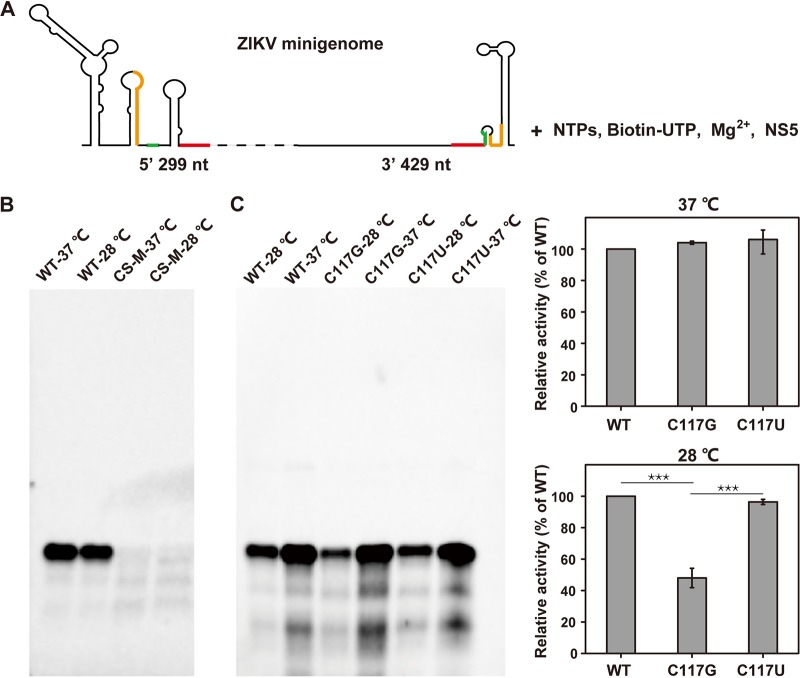FIG 9.
Temperature-dependent effects of DAR mutants on de novo RNA synthesis. (A) Schematic view of the reaction setup of the in vitro RdRp assay. The ZIKV minigenome RNA, which contains the 5ʹ 299-nt and 3ʹ UTR sequences of the genome, was used as the template; the UAR, DAR, and CS elements are labeled in orange, green, and red, respectively. The minigenome RNA template was incubated with a nucleoside triphosphate (NTP) mixture, biotin-UTP, and purified ZIKV NS5 protein in a reaction buffer containing 5 mM MgCl2, as described in Materials and Methods. (B) RdRp activities of NS5 at 37°C and 28°C. The WT minigenome was used as the template in the RdRp reaction; the reaction mixture was incubated at 37°C and 28°C for 90 min. The products were analyzed by formaldehyde-agarose gel electrophoresis, followed by blot analysis, as described in Materials and Methods. The minigenome containing the CS-M mutation was used as a negative control. (C) Effects of C117G and C117U mutations on de novo RNA synthesis at 37°C and 28°C. The WT and the C117G and C117U mutant minigenomes were used for RdRp reactions at 37°C and 28°C. The results were analyzed with ImageJ software, and the activity for each mutant is presented as the percentage relative to WT at each temperature. The data are representative of three independent experiments, and the error bars indicate standard deviations. The statistical analysis was performed using t test analysis with GraphPad Prism software. ***, P < 0.001.

